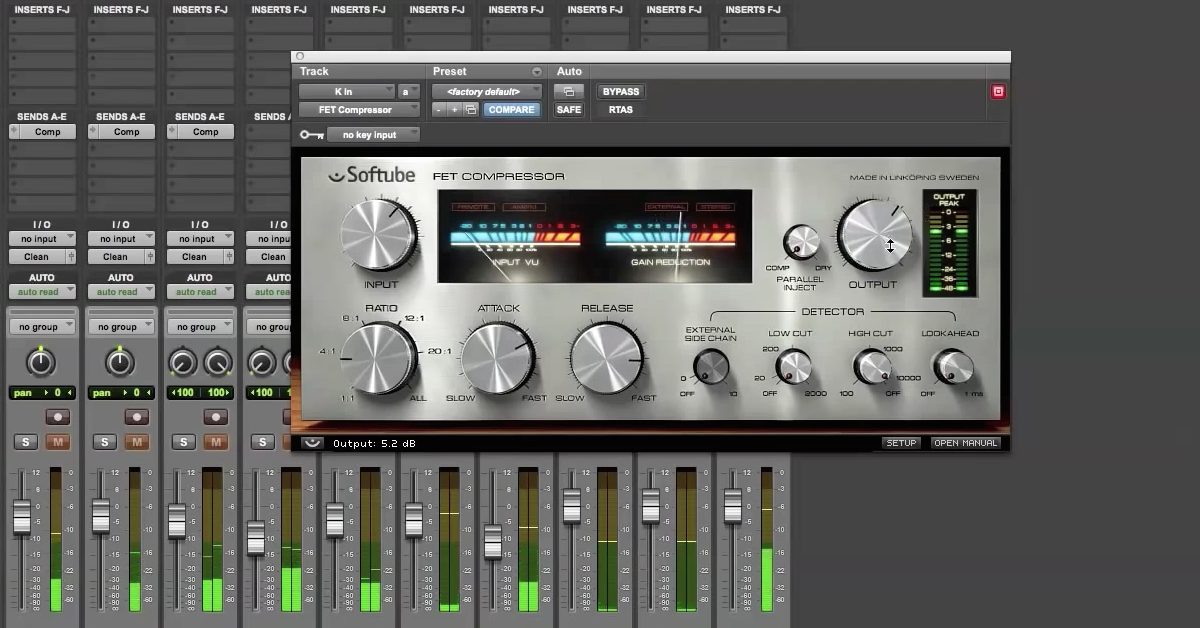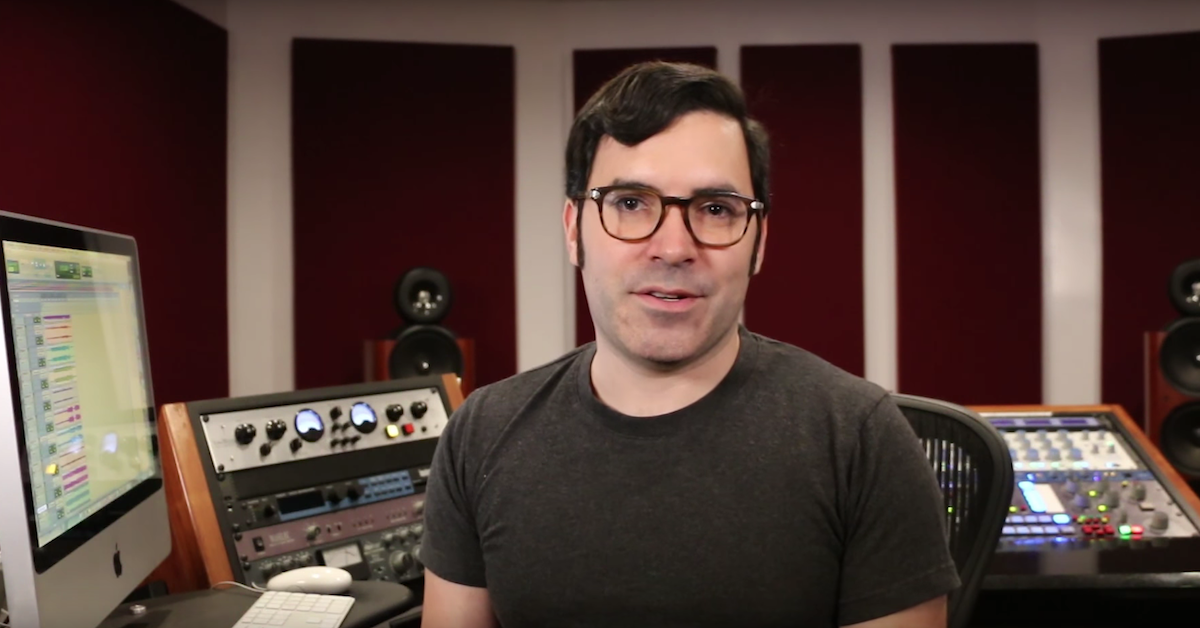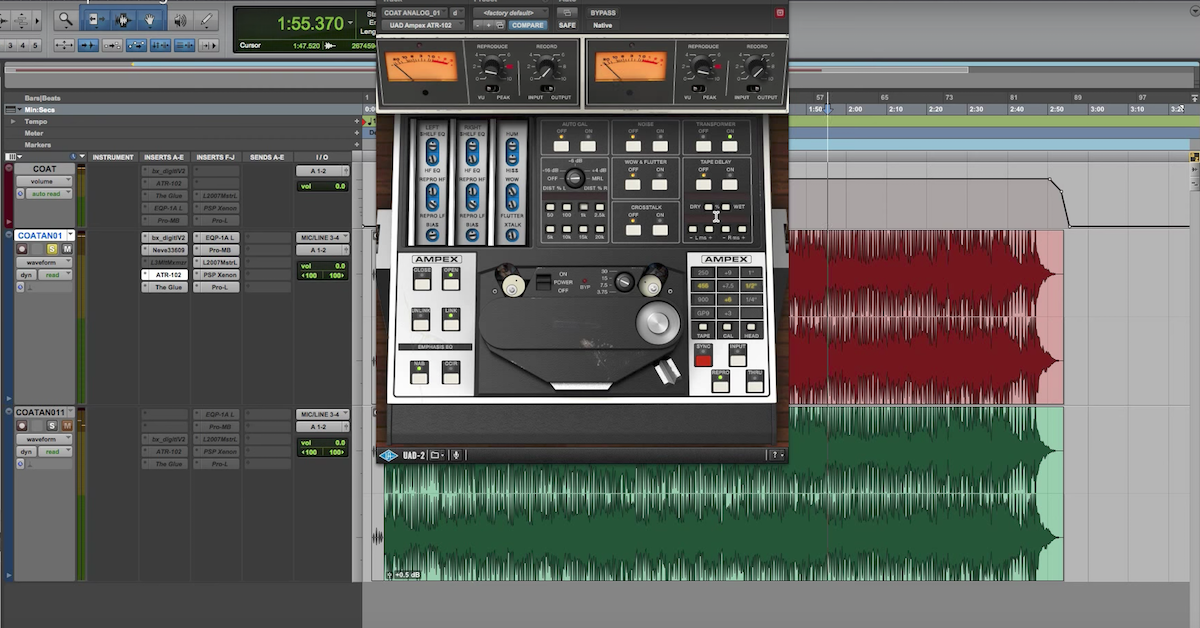Devin Kerr Interview
Article Content
I wanted to share a brand new plugin from our friends at Goodhertz called the Faraday Limiter.
I met Devin Kerr a few years ago when I was working on Quiztones with Audiofile and he was working on the FHX Headphone Processor for Fidelia.
Since then he’s gone on to create Goodhertz with co-founder Rob Stenson and they’ve been releasing awesome plugins and apps ever since.
You can learn more about Devin and his progression from musician to mastering engineer to plugin/app developer in the interview below.
Watch this video to hear the Faraday Limiter in action and be sure to check out some of their other cool plugins like the Vulf Compressor.
—
Hey Devin. So what’s your musical background?
As a kid, I played drums, guitar and piano, and later become pretty serious about trombone and bass guitar. I played bass in bands in middle/high school — we did a lot of writing, basement recording, and gigging in metro Detroit — and at some point I thought I might study trombone performance in college.
From the beginning, though, my music love was pretty tech-heavy: my high school bass rig incorporated a giant midi pedalboard with live looping capabilities & digitally-controlled analog effect switching, and I was also very keen on digital audio manipulation and circuit bending.
Instead of studying performance, I went to school for Sound Engineering at the University of Michigan, splitting my time evenly between the music school and the engineering school, where I deepened my knowledge of digital signal processing, analog circuits, and electromagnetics.
When did that morph into mixing/mastering?
I’d been recording for awhile but got my first true exposure to mixing & mastering in high school.
My band at the time could only afford to have three tracks mixed professionally, so I needed to mix the remaining tracks and then master all of the tracks myself on a bedroom Pro Tools rig. That was an excellent learning experience because there was a very clear benchmark: I had to match or exceed the three tracks that had already been mixed by the pro.
After that, I started doing mixing and mastering work for hire and continued throughout college. When I was in grad school, I supported myself by mastering, working out of the house that I had converted into a recording studio in Ann Arbor.
What drew you towards working on perception-based DSP like CanOpener?
I worked at a hearing research institute as a paid listener in college and later became a research assistant there, doing sound localization work with Ewan Macpherson. There are a lot of great reasons to do sound localization research, but I was always trying to apply the hearing research to music production or spatial audio DSP.
CanOpener came about from my own frustration with mixing on headphones and working with clients who were reviewing mixes on headphones while on tour. I think most audio engineers have had the experience of spending hours working on a mix on headphones, only to find that it sounds like garbage on speakers.
CanOpener helps close the speaker-headphone divide a bit, making panning and spatial judgements easier and cutting down on listener fatigue.
What inspired you to start developing plugins?
In a lot of cases, there’s sort of a disconnect between the people making audio software and the people who actually use it everyday in the studio. In my case, I’d done both: worked full time as a mastering engineer and also worked full time doing audio DSP at some point, so there were certain things, like ease of use, efficiency, automation, and other sonic things that I felt inspired to try to improve.
As a mastering engineer, I hated wasting time removing clicks and pops in clients’ mixes that had been caused by bad plugin automation, so we vowed to never let that happen — any standard parameter in a Goodhertz plugin, even on/off switches, can be freely automated without clicks, pops, or other artifacts.
Working with Rob Stenson, Goodhertz co-founder, is also very inspiring and incredibly fun for me. He has a strong background in web technologies and interface design — he’s good at basically everything that I’m not & also a great musician. The perspective he brings to plugin development is very fresh, and it’s led to a lot of forward-thinking ideas in our plugins.
For example, copy/pasting a plugin setting as a URL, like this: https://goodhertz.co/vulf-comp/1.1.1/?cm:83/lf:0, is unique to Goodhertz plugins and makes it so much easier to share presets with other mixers or producers — you can even tweet a plugin setting.
How did Goodhertz come to be?
I went to college with Jack Stratton, Vulfpeck’s bandleader, who is also a childhood friend of Rob’s. While visiting San Francisco one summer, Jack and two other friends, Theo Katzman & Chris Conover, all separately suggested I meet Rob — so I did. We had some mediocre banh mi on Divisadero and sort of floated the idea of collaborating on some software together.
It turned out that our skill sets were highly complementary, and we started collaborating on some plugin development and then later on the iOS version of CanOpener.
What was your thought process behind designing the Faraday Limiter?
The idea with Faraday Limiter was to make a limiter that was essentially the antidote to the L2 Ultramaximizer.
I don’t have anything against the L2, but it never made sense to me that people were using it all over their mixes: on vocals, on individual instruments, on drums, with almost no control over how it behaved or handled transients. The L2 was designed to be a transparent mastering limiter (which it does well enough), but most of the time you don’t need or want something completely neutral in a mix — you may want to hear some coloration, harmonics, or weight, which is what Faraday Limiter does very well.
We modeled some of my favorite analog transformers for Faraday and did some interesting things in the limiter detector algorithm that give it a wonderfully thick, smooth sound.
What’s next for yourself and Goodhertz?
We’re working hard on AAX versions of all our plugins for Pro Tools and hope to have an AAX beta sometime in January of next year — and VST after that.
Otherwise, we have another perception-based plugin, a spatial audio tool, that will be available soon, as well as a listening simulation plugin based on our work developing audio for iPhones (interested readers can sign up for our mailing list to stay informed).
Given our simple but powerful interface language, we’re able to spin up new plugins far faster than other plugin companies, so expect to see lots of new releases from Goodhertz in 2015!





